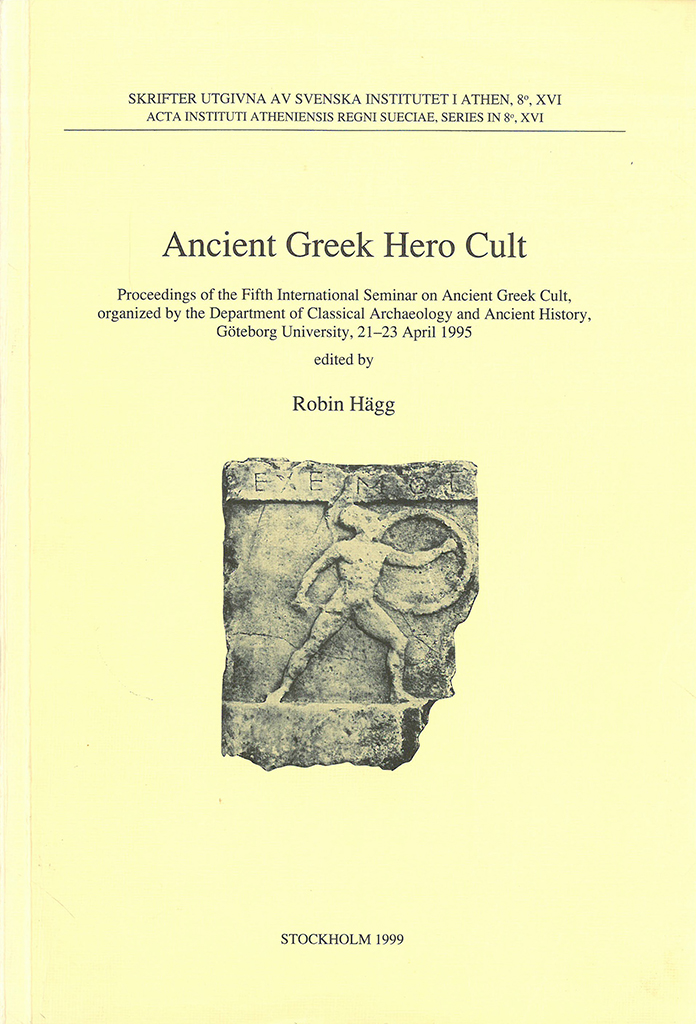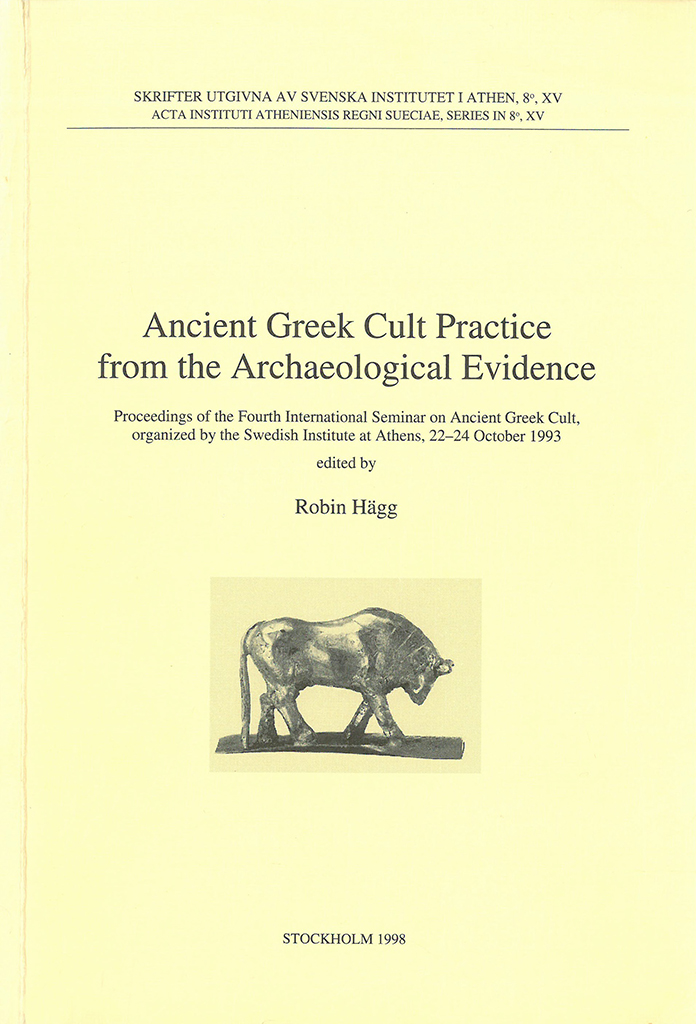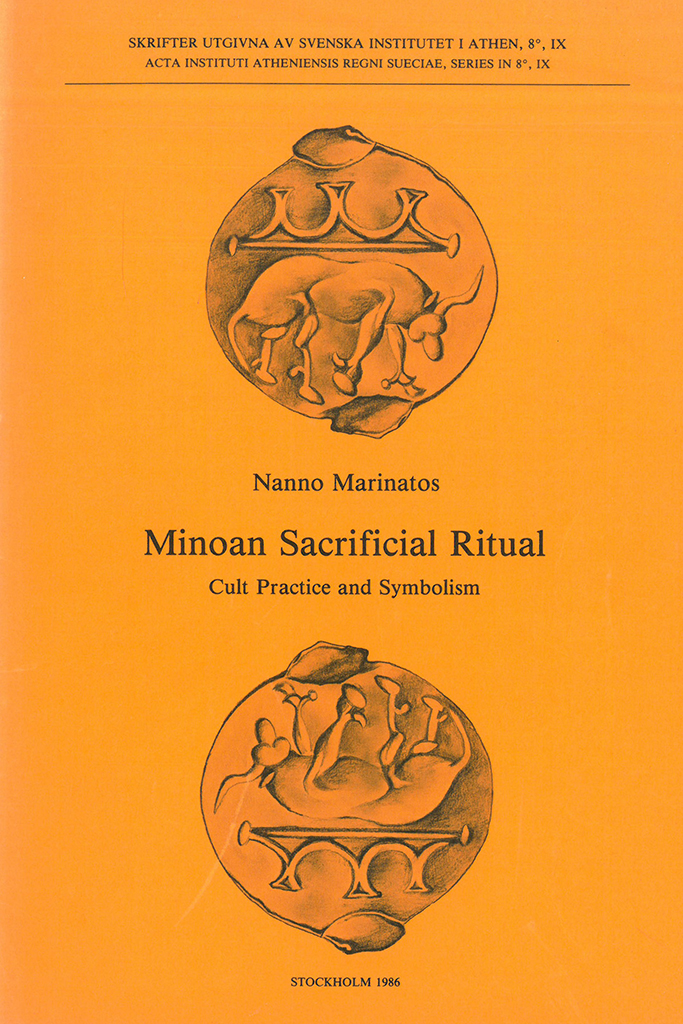Opuscula 14 is published with open access. Printed edition distributed by Eddy.se AB. Also available at Amazon.com, Adlibris, and Bokus. View volume at ERIH PLUS. Bulls and rams. The sacrifice to Erechtheus By Jenifer Neils (American School of Classical Studies at Athens, Greece) Abstract The earliest literary reference to animal sacrifice in Athens is the passage in Homer’s Iliad (2.550–551) that mentions Athenian youths propitiating their legendary king Erechtheus with bulls and rams. It is surprising that this passage has not been associated with the north frieze of the Parthenon, where twelve young men are leading four bovines and four sheep to sacrifice, in contrast with the ten cows on the south frieze which clearly represent the hecatomb for Athena Polias at the Panathenaia. While it is difficult to ascertain the sex of these eight animals, the horns and size of the sheep suggest that they are male. Given the prominence of the cult of the hero Erechtheus on the north side of the Acropolis, it is reasonable to identify these sacrificial animals as an offering to the pater patriae of the Athenians. Bibliographical information Jenifer Neils, ’Bulls and rams. The sacrifice to Erechtheus’, Opuscula. Annual of the Swedish Institutes at Athens and…
Opuscula 7 (2014) is now available for purchase and free download at Bokorder.se. Also available at Amazon.com, Amazon.de, Bokus.com and Adlibris.com. Castration, cult and agriculture. Perspectives on Greek animal sacrifice By Gunnel Ekroth Abstract The castration of most male animals seems to have been the rule in ancient Greece when rearing cattle, sheep, goats, and pigs; only very few adult males are needed for breeding purposes and flocks of bulls, rams, billy-goats and boars are difficult to keep, since they are too aggressive. Castrated males yield more and fattier meat, and, in the case of sheep, more wool. Still, sacred laws and sacrificial calendars stipulate the sacrifice of uncastrated victims, and vase-paintings frequently represent bulls, rams and billy-goats in ritual contexts. This paper will discuss the role of uncastrated male animals in Greek cult in the Archaic, Classical and Hellenistic periods, both from a religious and an agricultural perspective. Of particular interest are the relations between the practical, economic reality and the theological perception of sacrifice. These issues will be explored using epigraphical, literary, iconographical and zooarchaeological evidence. Bibliographical information Gunnel Ekroth, ‘Cult, castration and agriculture. Perspectives on Greek animal sacrifice’, Opuscula. Annual of the Swedish Institutes at Athens and…
Now available for purchase at Amazon.com, Amazon.de, Bokus.com, Adlibris.com. Distributed by Eddy.se AB. Encounters with Mycenaean figures and figurines. Papers presented at a seminar at the Swedish Institute at Athens, 27–29 April 2001 By Ann-Louise Schallin & Petra Pakkanen (eds.) This volume presents fourteen articles which discuss Mycenaean figurines from various points of view. They focus on different aspects of the figurines, elaborating on their function, contextual characteristics, production, use-life, classification, topography, and history of scholarship. The articles are based on papers given at a workshop at the Swedish Institute at Athens in April 2001 entitled ‘Cultic Space and Mycenaean Figurines’. The idea of having a workshop arose from the fact that several of the participants were involved at the time with the documentation of various figurine types from the so-called Potter’s Workshop at Mastos in the Berbati Valley in the Argolid. The number and variety of the Mycenaean figurines from Mastos is impressive, particularly as the excavation had covered only a small area. The excavator, Å. Åkerström, proposed that the site had a cultic function in addition to its role as a production centre. In order to better understand the characteristics and identity of Mastos, scholars were invited to…
Distributed by Astrom Editions. Ancient Greek hero cult. Proceedings of the Fifth International Seminar on Ancient Greek Cult, organized by the Department of Classical Archaeology and Ancient History, Göteborg University, 21–23 April 1995 Edited by Robin Hägg A collection of twelve papers, read at an international seminar in Göteborg, that deal with various phenomena of the ancient Greek hero cult, based on literary, iconographical and archaeological evidence. Among the special topics discussed are the hero cults in Early Iron Age Greece, the relationship between funerary ritual, the veneration of ancestors and the cult of heros, the Danaides of Argos as “ancestors”, the multilocality of heroes, patriotic heroes, the politics of the transferal of the bones of heros, the position of the Dioskouroi as Laconian heroes worshipped also in Attica, the origins of Greek hero cult in the context of overseas foundations, the heroon of Asclepius in Athens, the sacrificial rituals of Greek hero cults in Pausanias, the hero Melikertes-Palaimon at Isthmia, and the development of hero cults in the Hellenistic and Roman periods. Contents Preface (p. 7) Alexander Mazarakis Ainian | Reflections on hero cults in Early Iron Age Greece (pp. 9–36) Robin Hägg | Funerary ritual, veneration of ancestors…
Distributed by Astrom Editions Ancient Greek cult practice from the archaeological evidence. Proceedings of the Fourth International Seminar on Ancient Greek Cult, organized by the Swedish Institute at Athens, 22–24 October 1993 Edited by Robin Hägg A collection of thirteen papers, read at an international seminar in Athens, that deal with various phenomena of Greek cult practice, analyzing the information gained from the archaeological evidence. Among the special topics discussed are cult practice in the acropolis sanctuary of Minoa on Amorgos, the sanctuaries in the Artemision of Ephesos, the role played by osteological analysis in the understanding of Greek sacrificial practice, the interpretation of animal bones and fire traces connected with ritual feasting in the Herakleion on Thasos, ritual and society in Early Iron Age Corinthia, small dedications from the Archaic temple of Poseidon at Isthmia, altars in Greek hero cults, the early history of the sanctuary of Demeter and Kore at Eleusis, a sacrificial area near the sanctuary of Apollo Daphnephoros at Eretria, terracotta plaques and other finds from the sanctuary of Demeter and the Dioscouri at Messene, the interpretation of sickles in Greek sanctuaries, changes in votive practice from Classical to Hellenistic times, and cursing in the Sanctuary…
Published by the Swedish Institute at Athens. Distributed by Astrom Editions. Minoan sacrificial ritual. Cult practice and symbolism By Nanno Marinatos Abstract The cult practice and symbolism of Minoan sacrifice ritual are examined in this monograph. The archaeological evidence is analyzed and suggestions are made concerning the type and place of sacrifice, location of cult meals and species of sacrificial animals. The iconographical evidence supplies additional information about the priesthood, manner of sacrifice and occasions during which animals were slaughtered. Several scenes from glyptic art are discussed where sacrificial ritual is presented as a pictorial metaphor. Certain symbols are isolated and their connection with sacrificial practice is established. Through a projective mechanism, the Minoans expressed not only the importance of animal sacrifice but their perception of it as an extension of the laws of nature. Contents Introduction Part 1. The archaeological and iconographical evidence Types of animals Place of sacrifice; altars Manner of sacrifice Libations Animal rhyta and libation tables Processions Burying and burning the sacrificial animal Cult meals The skull and horns of the sacrificial animal Occasion Symbolic representations Conclusions Part 2. Symbols on seals denoting sacrifice of animals Introduction The eight-shield The sacred garment The impaled triangle Types…






